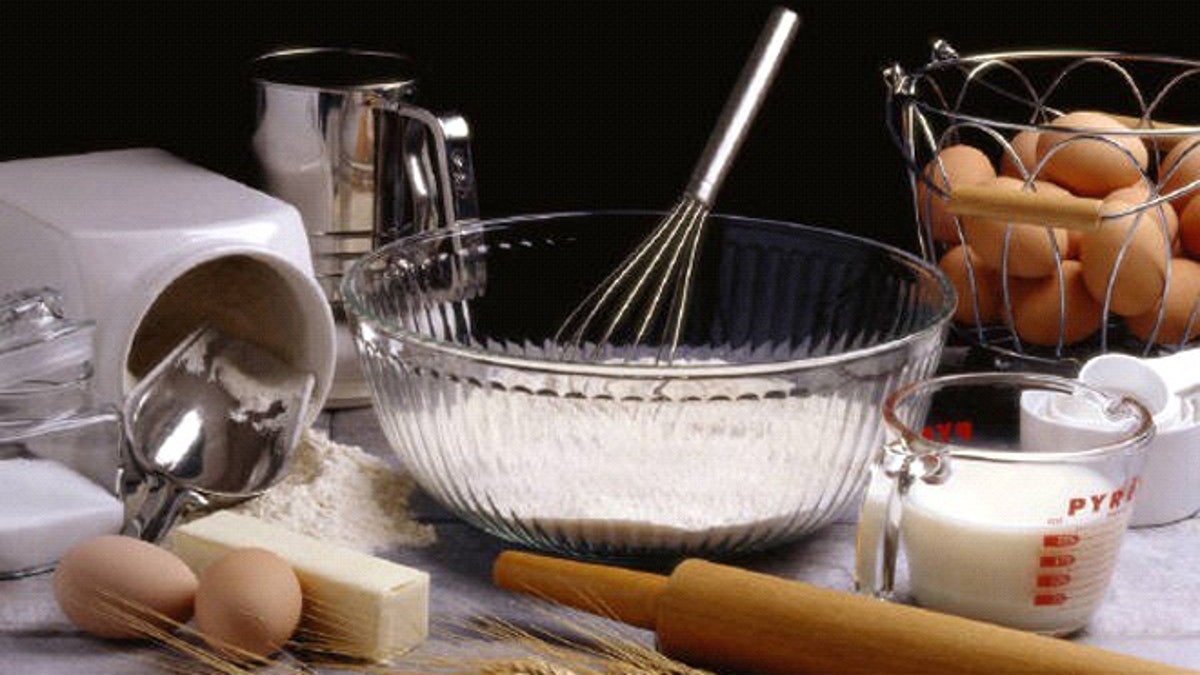
(South Dakota Department of Health)
New to the kitchen? Or just plain hopeless at baking? If things are not working out, here are some commonly confused ingredients that could be the recipe for disaster. Anthony Valerio of Pasadena's Wonderland Custom Cakes, two-time winner of the Food Network's hit show "Cupcake Wars," along with best-selling cook book author and pastry chef George Geary help sort things out.
Baking Powder vs. Baking Soda
Probably the most common mistake is confusing these two common ingredients. Despite their similarity in packaging, name, and appearance, they react very differently. Valerio explains that baking soda requires an acidic ingredient to activate its chemical reaction that helps rising. Baking powder already has the acidic ingredient.
Switching these two will result in an undesirable taste. If baking soda is used instead of baking powder, there will be a bitter taste. Also, using the wrong one in the wrong amounts could result in improper rising.
Self-Rising Flour vs. All-Purpose Flour
Self-rising flour was created to simplify the baking process for the at-home cook, says Geary. Leavening ingredients like baking powder, baking soda, and others that help the recipe rise then would not be needed.
Valerio says that if self-rising flour is used in place of regular flour, and leavenings are also added, "you'll probably spend the rest of the day cleaning out your oven from the fireworks your baked goods left behind." If you use regular flour and forget to add the leavenings, your baked goods will probably end up with the consistency of a brick.
Raw Sugar vs. Brown Sugar
Physically there is a pretty clear difference between brown sugar and white raw sugar. It comes down to moisture. Raw sugar is much drier and in turn can make your baked goods crumble and have chunks of undissolved sugar, according to Geary.
Valerio also recommends using brown sugar for baked goods that feature molasses and peanut butter flavors.
Buttermilk vs. Regular Milk
Many bakers swear by buttermilk because they believe it makes their goods more moist. Buttermilk is heartier and should in turn be used in heartier baking, such as red velvet, chocolate, and peanut butter cakes.
Valerio recommends using whole milk, which will keep the fat in your baked goods and leave them flavored and moist to perfection. But be careful using baking soda with regular milk; it could leave a bitter taste and a drier baked good.
Vegetable Oil vs. Canola Oil vs. Olive Oil
They all look the same, similar colors, bottles, and consistency, but there are some noticeable differences in taste and final product. Vegetable oil is often a general term applied to all of them, according to Geary.
Valerio says that canola and vegetable are mostly interchangeable and both come from plants but canola is a bit healthier. Olive oil can be quite varied in taste and texture, resulting in a denser, richer and more apparent taste in cakes.
Egg Whites and Eggs
Eggs help keep baked goods together. Generally egg whites are whipped until fluffy and folded into batter to create fluffier, lighter cakes. If you only use egg whites, it will make your baked goods more brittle and dry. Whole eggs, on the other hand, hold your baked goods together and also add fat for moisture.
So put your apron on, and start mixing it up! (Just not these ingredients.)
